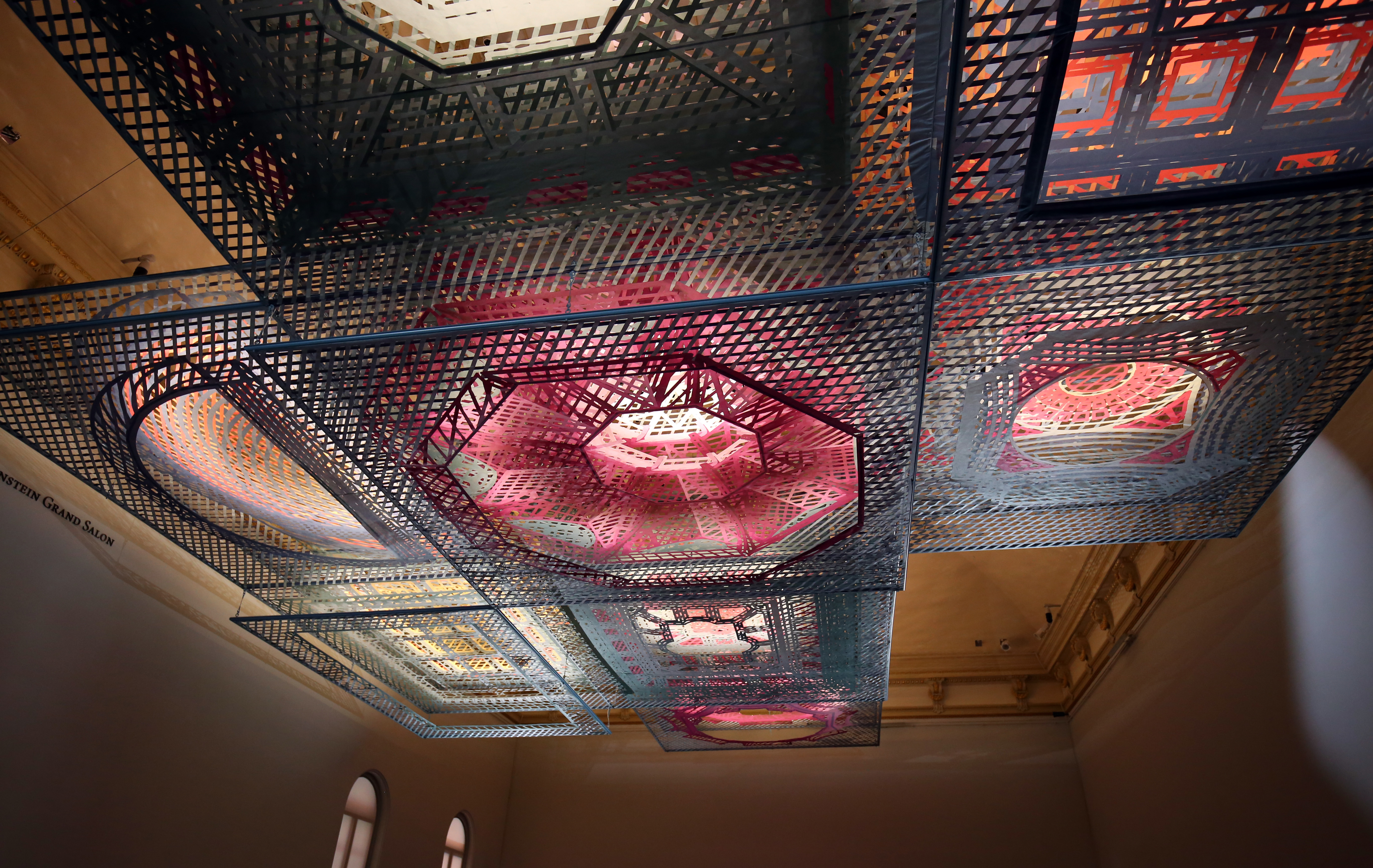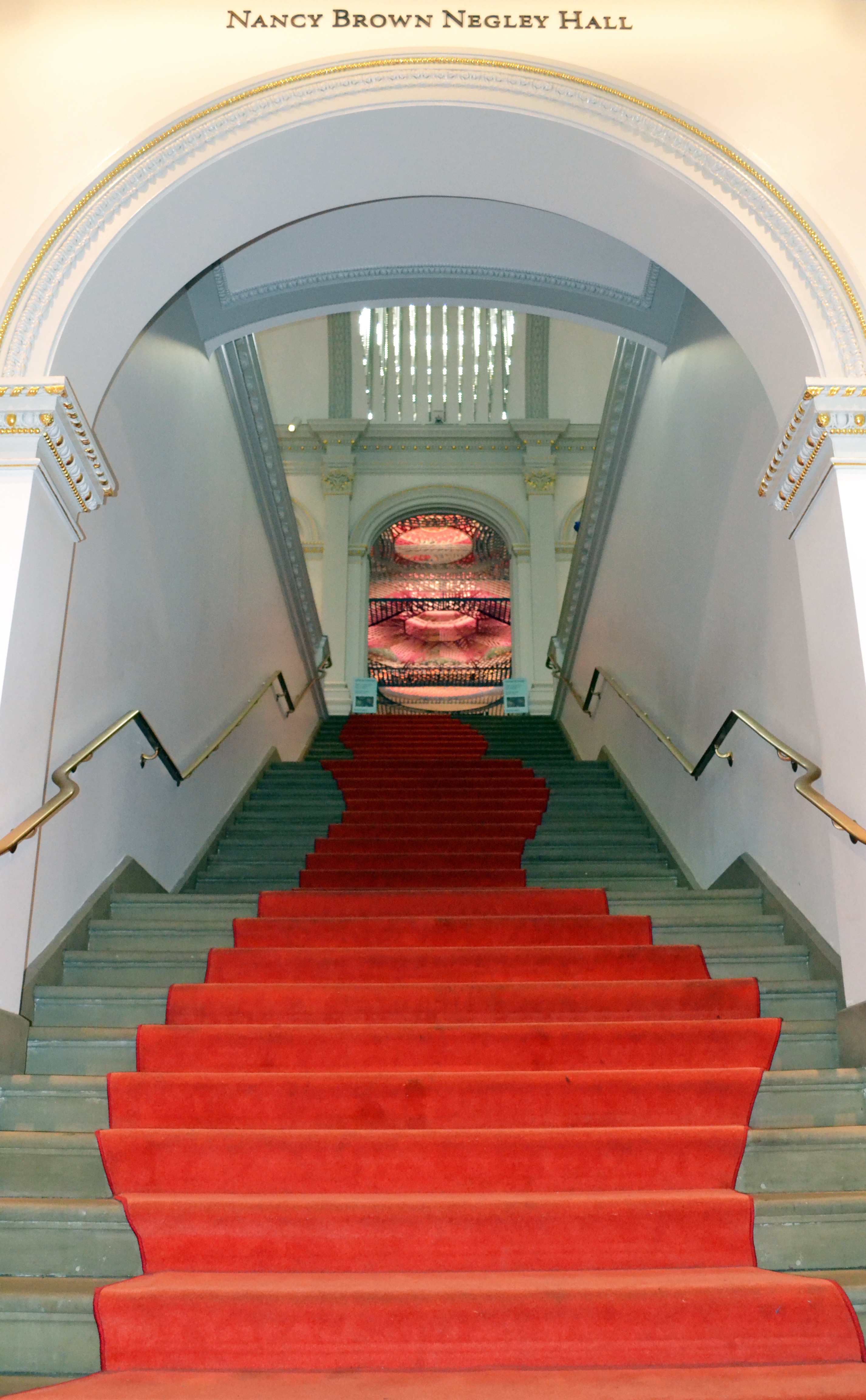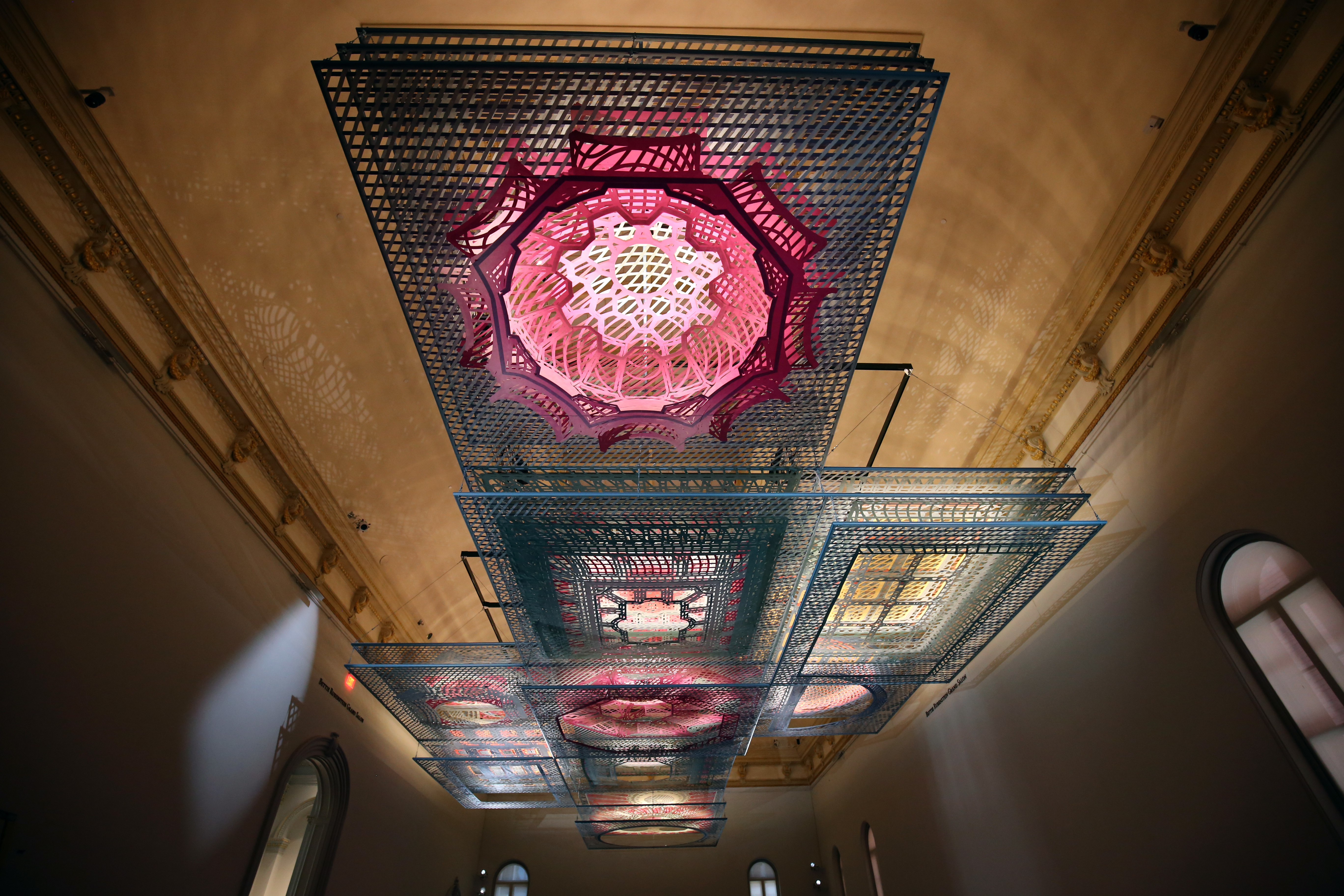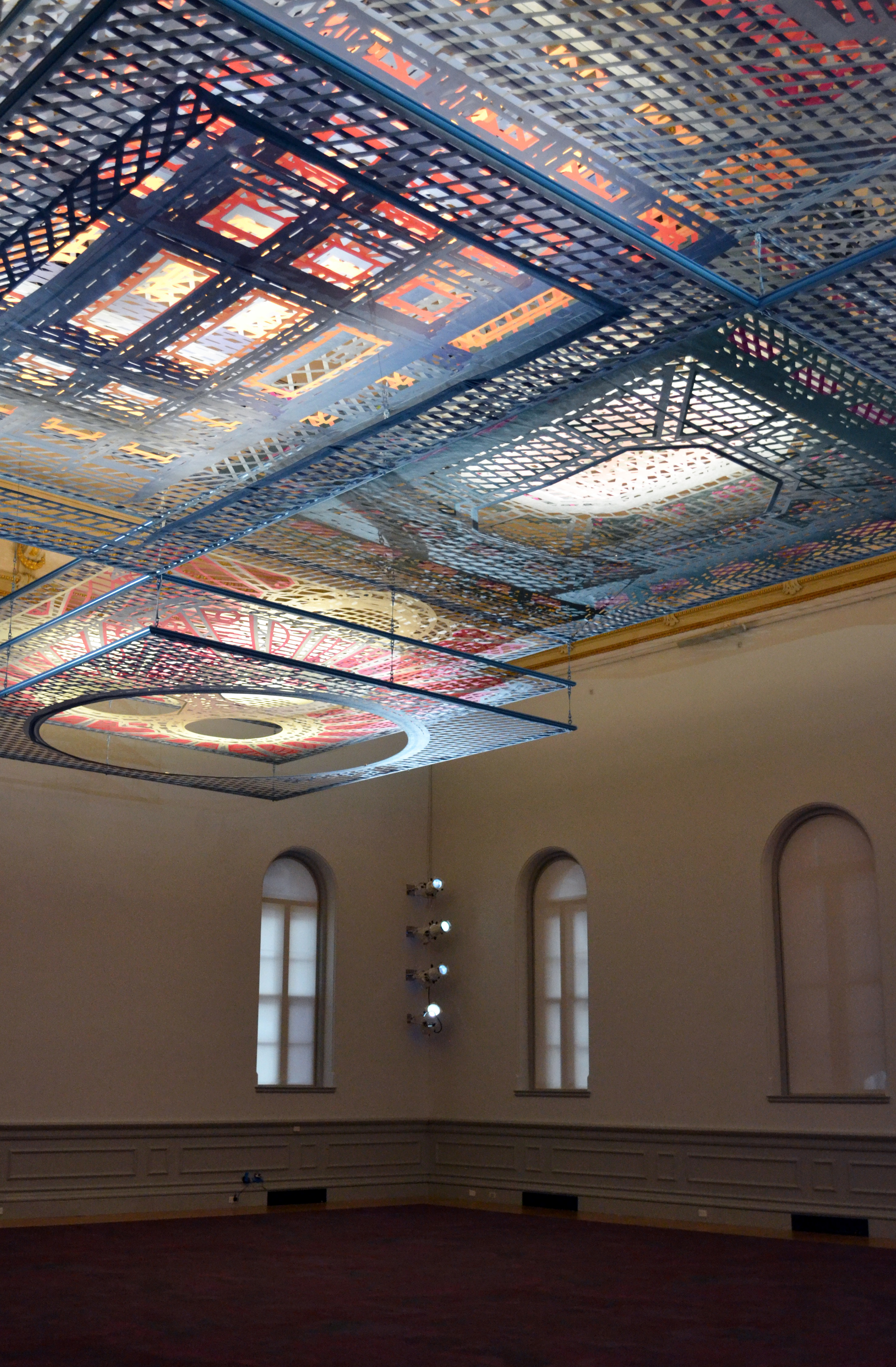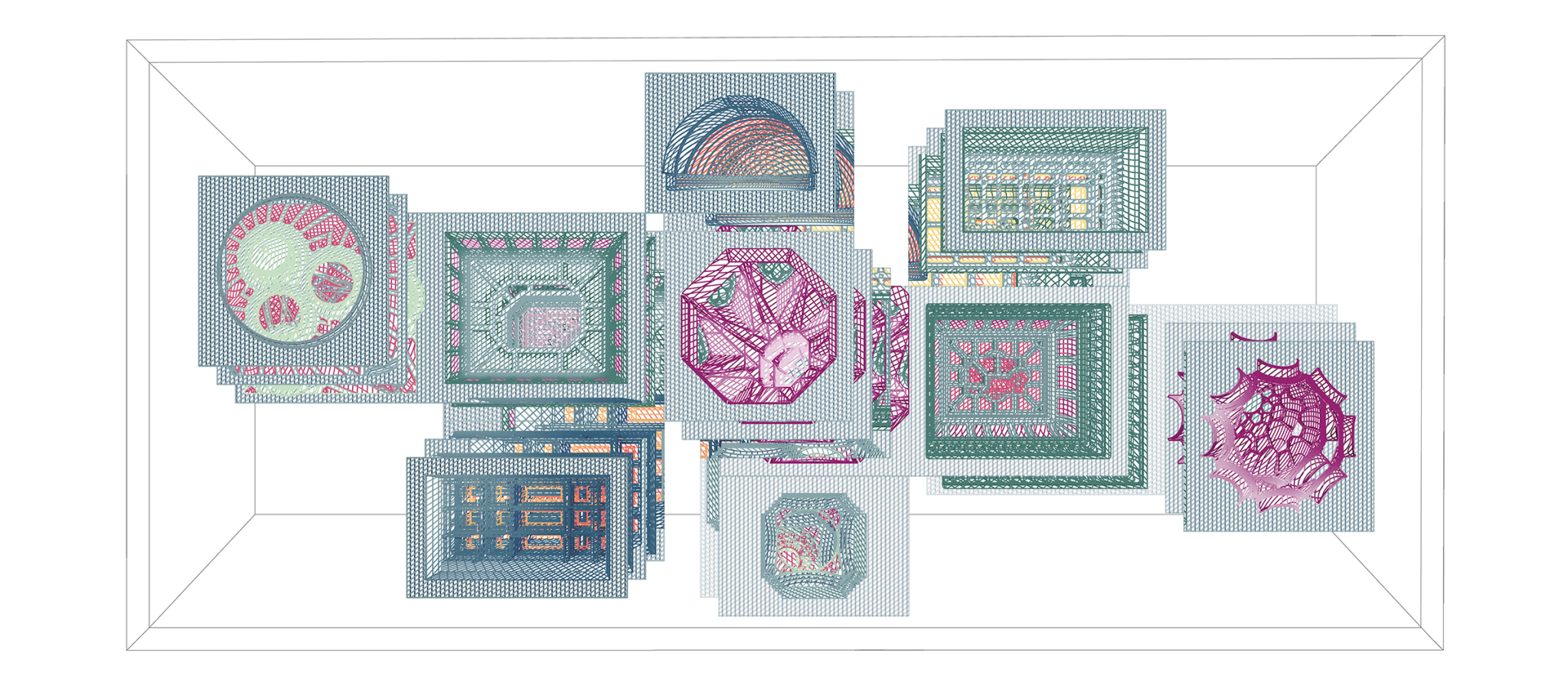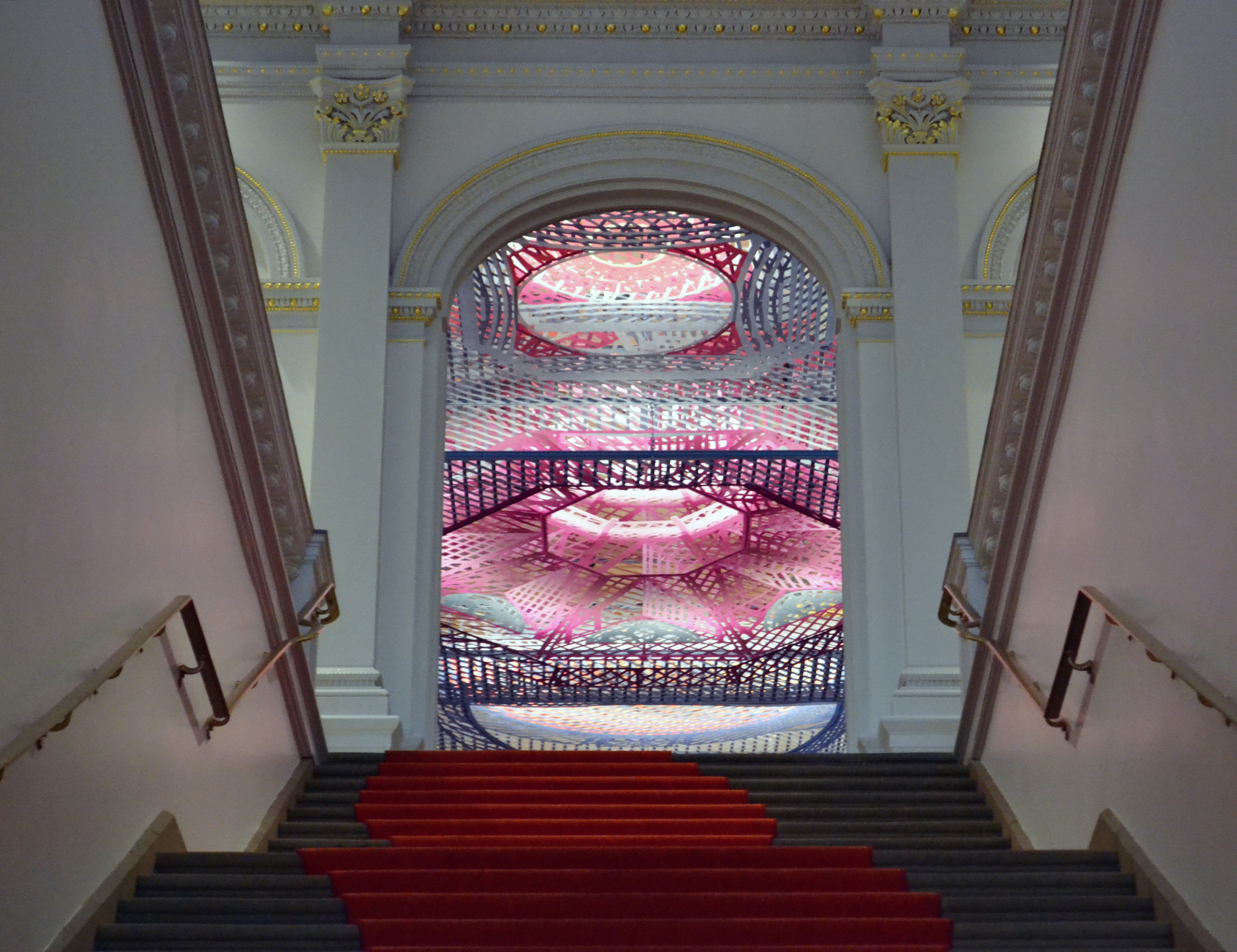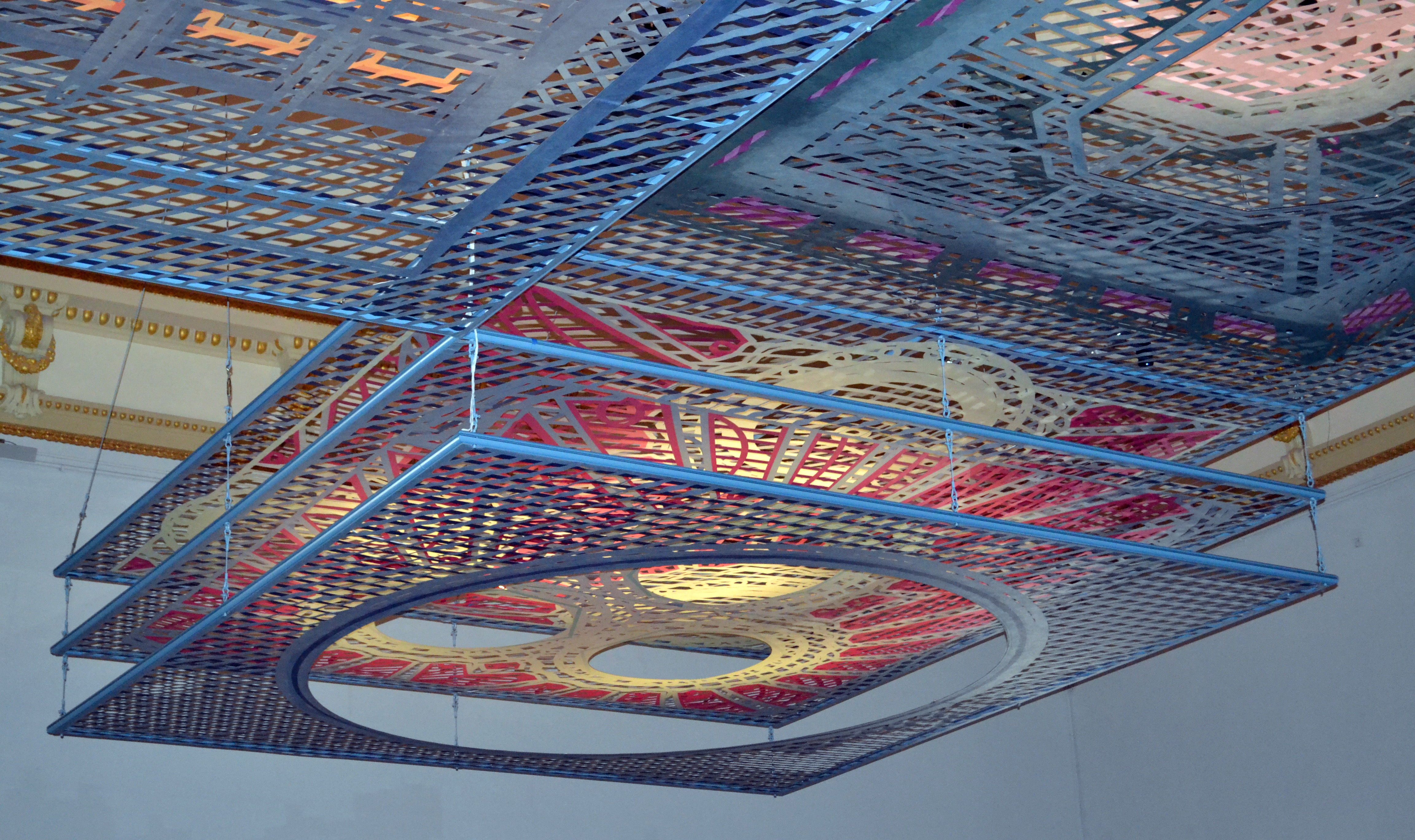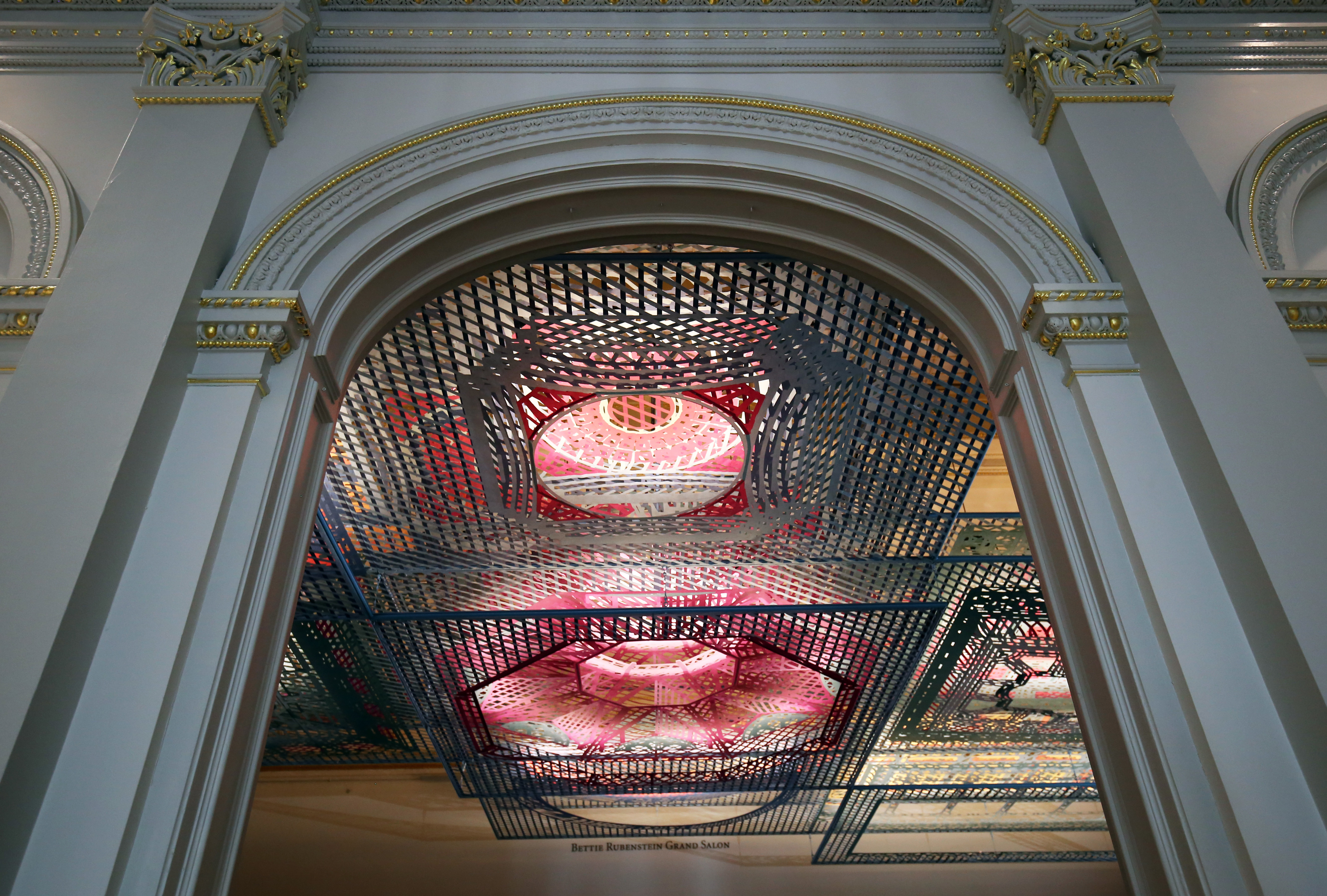SCI-Arc Faculty David Freeland Installs Winning Exhibition at the Smithsonian
Architectural design practice FreelandBuck, co-founded by SCI-Arc faculty member David Freeland, is a firm known for its research and practice that focuses on the spatial potential of patterned systems. Its latest installation is “Parallax Gap,” a 2,500-square-foot canopy suspended from the ceiling of the Bettie Rubenstein Grand Salon, the largest room at the Renwick Gallery of the Smithsonian American Art Museum. FreelandBuck was awarded the winning entry in the museum’s “ABOVE the Renwick” competition, which drew submissions from eight other firms including Ball-Nogues Studio, Collective-LOK, Ibañez Kim, Iwamoto Scott, Joseph Giovannini, Oyler Wu Collaborative and Matsys Studio.
“We are excited to have our work exhibited at the Renwick where so many people will have the opportunity to experience it,” Freeland says. “Free to the public, the Smithsonian is an important institution in the development, support, and exhibition of American arts and culture. We feel fortunate for the opportunity to make a contribution at a national level.”
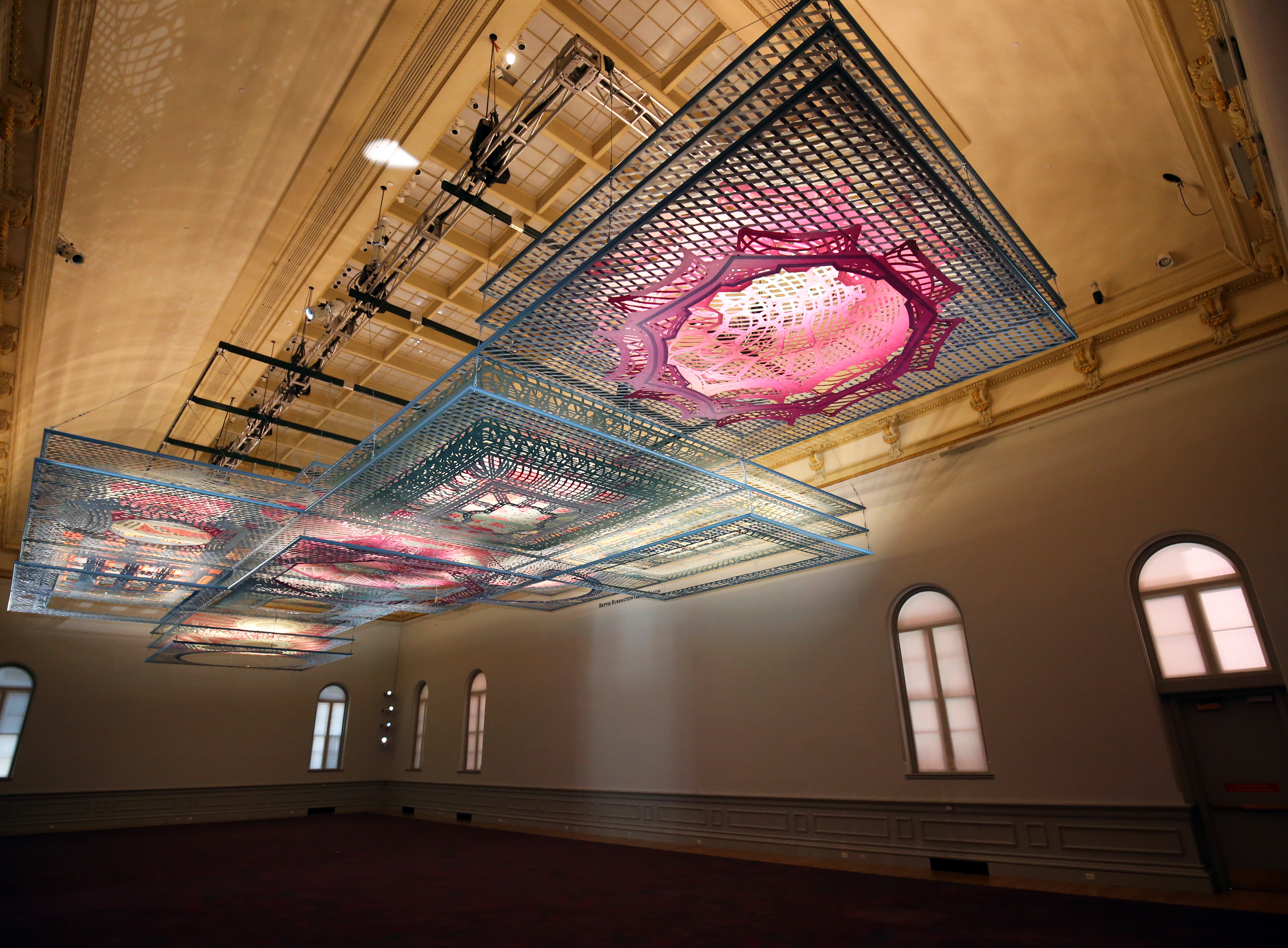
FreelandBuck’s installation draws on the Renwick’s unique historical context in the American gallery landscape. The Renwick Gallery was the first American building designed specifically as an art museum and the first to adopt a new style called Second Empire, inspired by Louis XIV’s architecture in France. “Its history is a big part of the museum’s identity, so we wanted the installation to serve as a field guide to American architecture at that time,” Freeland explains. “The eclecticism of Victorian-era architecture gave us a variety of patterns and shapes that we brought together through a consistent method of drawing.” “Parallax Gap” features nine ceilings from buildings built contemporaneous with the construction of the Renwick Gallery, which was completed in 1874. Iconic American architecture from Second Empire, Victorian Gothic, Art Deco, Richardsonian Romanesque, Beaux-Arts, and Greek Revival styles are all represented with a unique take on one of the most well-recognized ceiling treatments: Trompe l’oeil. Literally translated from French as “optical illusion,” trompe l’oeil functions from a single vantage point, usually the center of a nave or directly under a dome. From other points of view the illusion fails, rendering figures out of scale, and disorienting space. The FreelandBuck installation highlights those gaps in perspective--the word “parallax" refers to an apparent difference seen from two different lines of sight--presenting a visual puzzle for viewers to solve.
“The name of the installation describes one of the visual effects that are being explored; parallax is experienced most clearly in motion where objects in the foreground appear to move more quickly than objects in the background, like looking down rows of a cornfield,” Freeland explains. “A similar effect occurs in the installation: From particular points of view all of the layers align, creating a trompe l’oeil effect and coherent description of one of the ceiling drawings. Between these points of view are ‘gaps’ where the layers misalign, creating dynamic overlays of the perforated layers of fabric and fusing the ceilings together into new hybrid figures.” The architectural design of the Renwick’s Grand Salon features proportions more similar to a scroll than a cathedral nave. It is more broad than deep, so FreelandBuck placed one scene next to another, reminiscent of a single static point of view that led scroll painters in China toward a looser system for describing depth. Those artists often leveraged multiple vanishing points and variables with unpredictable distortion between scenes. The nine ceilings in the installation are each drawn from several viewpoints, creating a series of distinct vantage points as viewers move through the gallery where drawings collide and dissolve. The individual drawings overlap to create multiple layers that merge into other, potential architectures. The FreelandBuck project team includes Dorian Booth, Alex Kim, Belinda Lee, Braden Young, and Takayuki Tachibe. Structural engineering was provided by Matthew Melnyk at Nous Engineering, who also teaches at SCI-Arc. The installation also features lighting design by David Ghatan at Pixelumenlab; fabrication by Fabric Images; and rigging by Sapsis Rigging.
“Parallax Gap” will be on view at the Smithsonian American Art Museum’s branch for contemporary craft and decorative arts through February 11, 2018.
*Photos by Libby Weiler and Rae Giard
